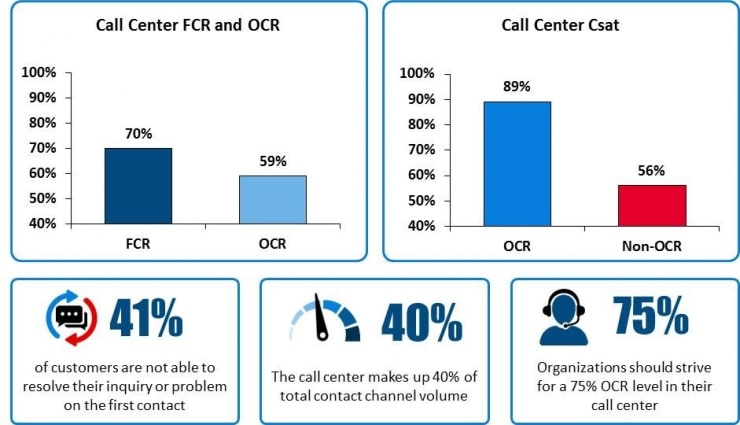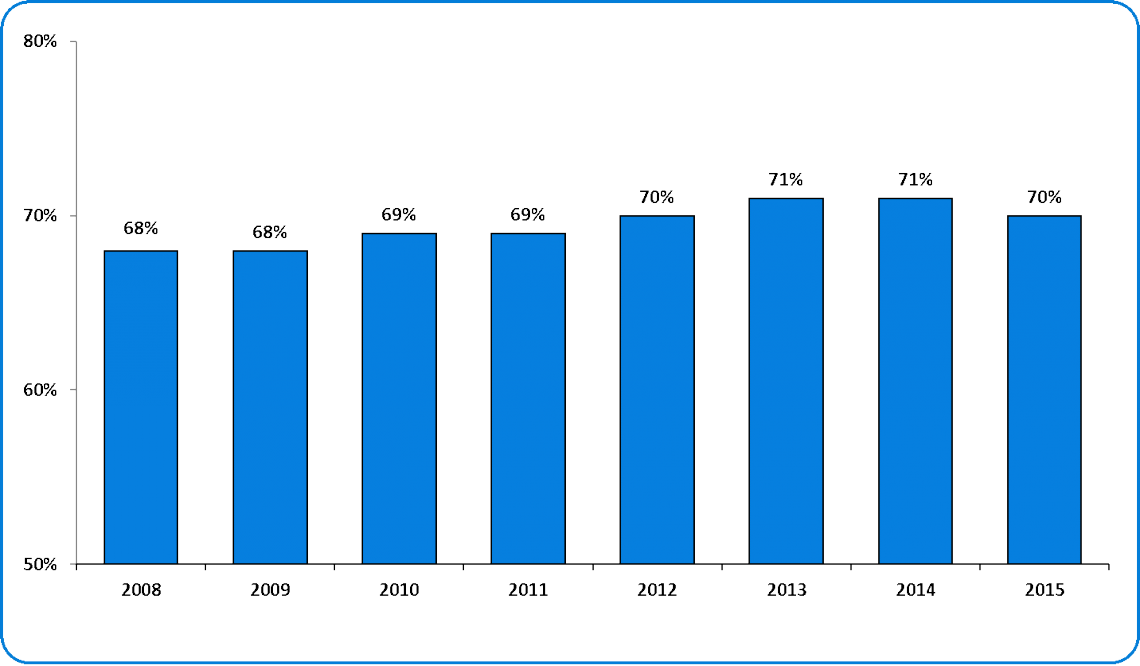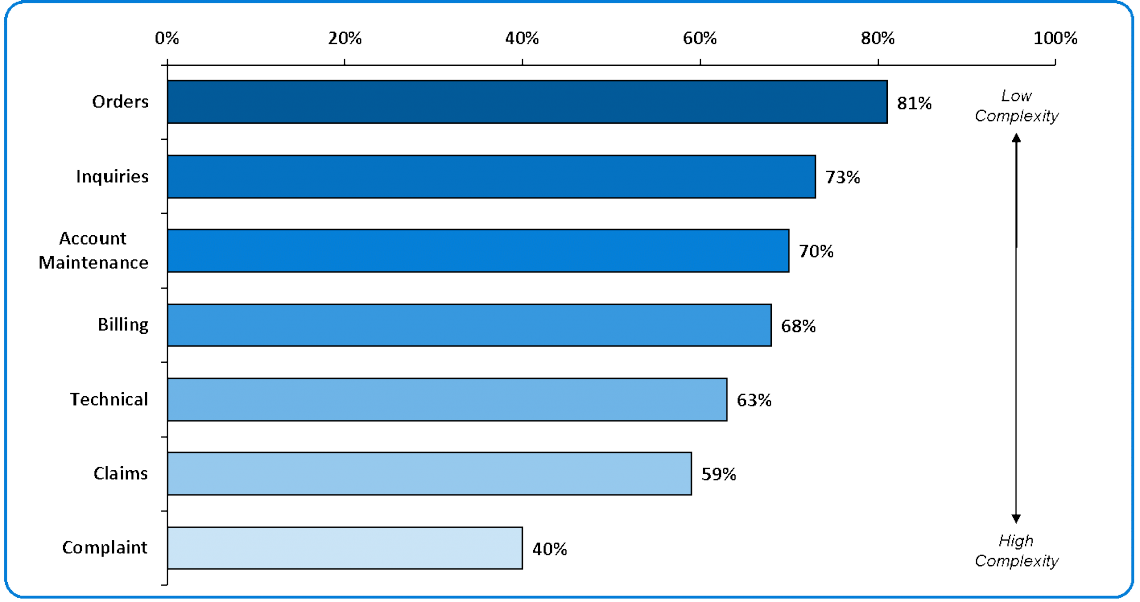
Call Center Customer Experience Research
Call center first call resolution (FCR) is 70%. One Contact Resolution (OCR) is 59%, which means an alarming 41% of customers had to contact the organization more than once to resolve the same inquiry or problem. In many cases, customer inquiries or problems that were unresolved, they used two or more contact channels trying to resolve their issue. For example, customers who used the call center channel, 20% of them used two or more contact channels to resolve their inquiry or problem.
OCR is a tougher metric to achieve than FCR because the calculation of OCR factors in whether or not other channels were used trying to resolve an inquiry or problem. Conversely, FCR only factors in the call center channel being used to resolve the inquiry or problem. Therefore, organizations should strive for a 75% OCR performance level in their call center to reduce repeat contacts and improve customer satisfaction (Csat). When the customer experiences OCR using the call center, Csat is 33% higher than non-OCR calls. Clearly, when a customer experiences OCR, it is the leading indicator for Csat.

Call Complexity
The below data shows historical FCR performance for the call center industry has increased by 2% since. In addition, FCR has moderately improved since 2008, except for 2015, where FCR declined. It is SQM's opinion that FCR has been stagnant or is showing a decline in the last few years because call complexity has increased drastically because self-service channels handle more of the simple inquiries and problems.
In order to maintain or improve FCR performance, call centers have made many improvements to their people, process, and technology practices. However, it is SQM's opinion that call complexity has increased at a higher rate than the improvement changes that call centers have made to their people, process, and technology practices for most call centers.
Historical FCR Performance Research

The following data shows orders with the highest FCR at 81%, inquiries at 73%, account maintenance at 70%, billing at 68%, technical at 63%, claims at 59%, and complaints with the lowest FCR at 40%. Thus, for many call centers, orders, inquiries, and account maintenance have low to moderate call type complexity and typically have higher than average FCR performance.
Billing, technical, claims, and complaint call types have moderate to high call complexity and typically have lower than average FCR performance. As a general rule of thumb, SQM uses average handle time (talk and wrap-up time), new hire and existing CSR training requirements, call flow, and desktop applications as the main determining factors for call complexity.
Another essential component of call complexity is the emotional aspect of the call, especially for customers who are calling the call center with a complaint.13% of customers who used a call center channel define their call reason as a complaint call. Interestingly, most call centers do not define and identify all customer complaints. A complaint is a gift from the customer because it allows the organization to provide service recovery and improve.
FCR Performance Comparison by Call Type

Quick Related Links
First Call Resolution Definition First Call Resolution PPT First Call Resolution Benefits
First Call Resolution Strategies First Call Resolution Operating Philosophy First Call Resolution Formula Contact Channels What is a good FCR Rate? One Contact Resolution Channel Hopping Top 10 CX Metrics
